The natural world is filled with wonders, from cascading waterfalls to verdant forests, and is a precious part of our planet that should be protected and experienced in equal measure. However, while our natural environment is often put under threat from human activity, the danger goes both ways. Humans are not invulnerable to the hazards of the natural world, and every year people lose their lives in encounters with wild predators.
In North America, there are a wide variety of native plants and animals that can be deadly to humans. These range from insects and invertebrates to big mammals and aquatic creatures. The dangers are widespread and more common than you might think.
This led us to wonder which animals are the most dangerous. By looking at the number of deaths caused by different animals over the last 50 years, we can build up a picture of the most deadly animals in North America. We can highlight when you should be extra cautious, and what you should do if you encounter one of the region’s deadliest animals.
The States With The Most Deaths Caused By Animals
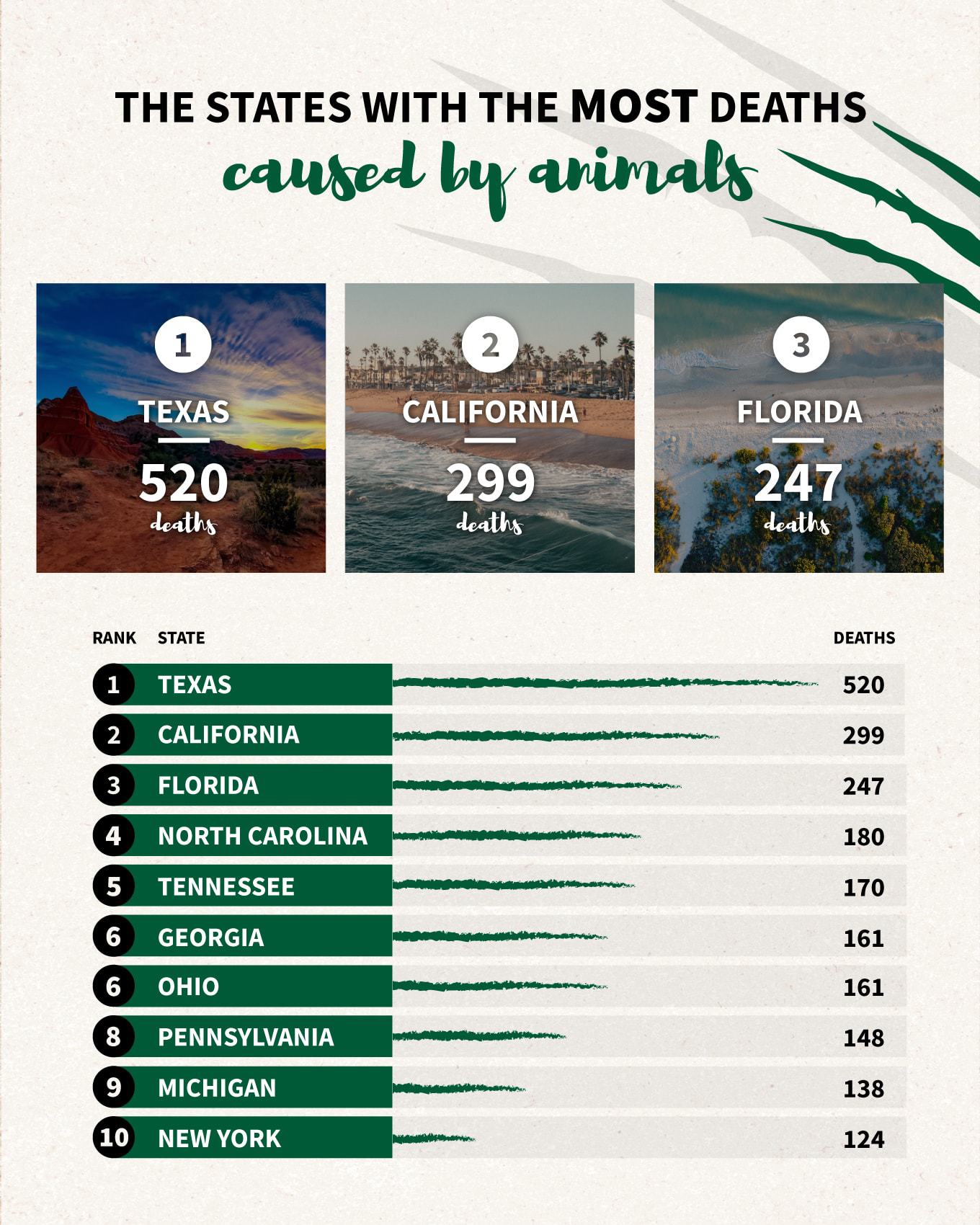
We’ve looked at CDC data to identify which states experience the most fatal animal attacks per year. The numbers here are for the 20 year period from 1999 to 2019. Just how dangerous is your state?
1. Texas
Deaths by animals: 520
The state with the most animal deaths is Texas, which recorded 520 deaths over 20 years. That’s equivalent to 26 deaths every year.
2. California
Deaths by animals: 299
California came second, with 299 deaths caused by animals over the 20 year period.
3. Florida
Deaths by animals: 247
The state with the third highest number of deaths caused by animals is Florida, where 247 people died due to animal attacks.
The States With The Fewest Deaths Caused By Animals
Having looked at the most dangerous states for deaths by animals, we also wanted to present the states that experience the fewest animal-related deaths.
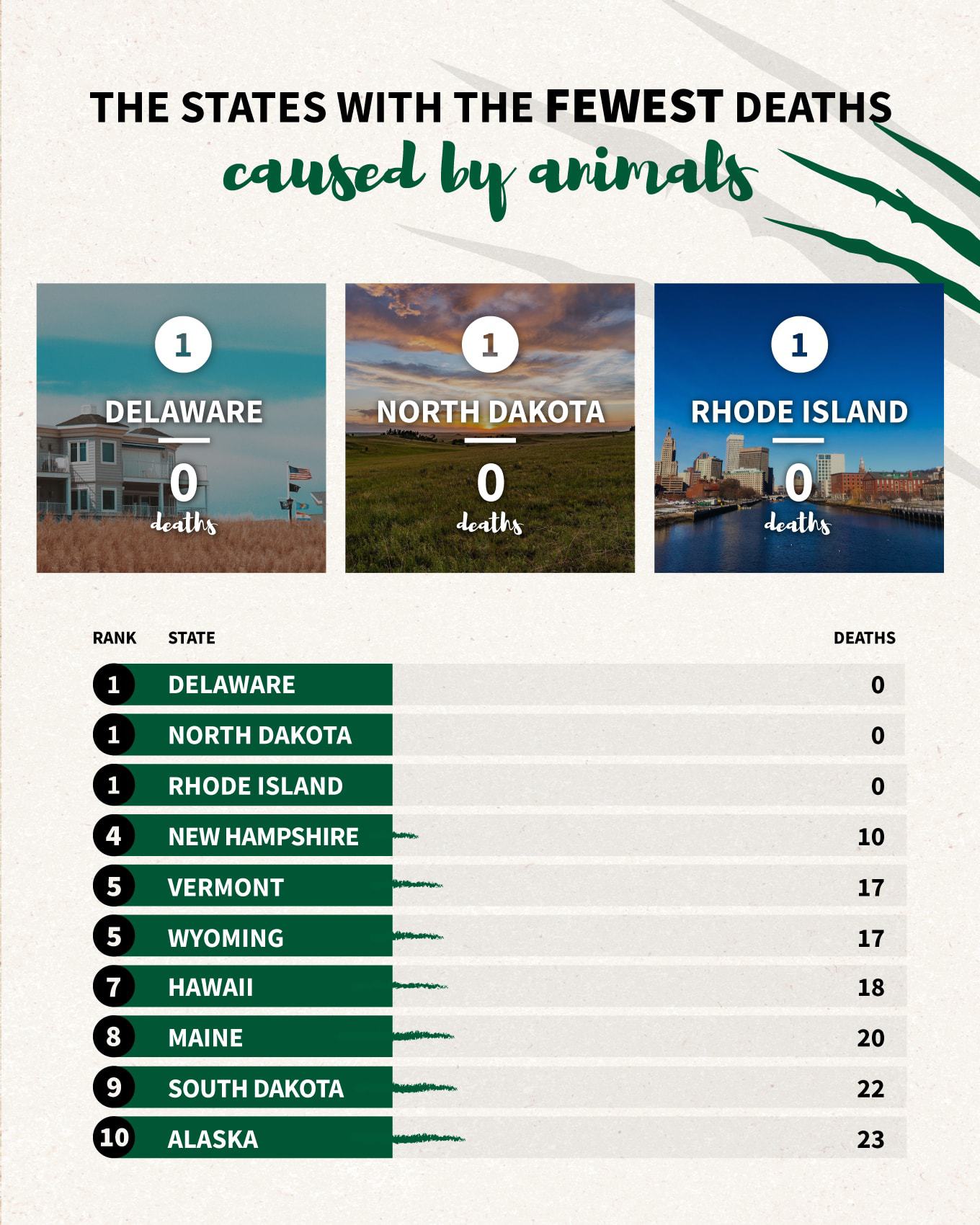
1. Delaware, North Dakota & Rhode Island
Deaths by animals: 0
Just three states in the whole country recorded zero deaths caused by animals in the last twenty years, which were Delaware, North Dakota, and Rhode Island, which are among the least populated and smallest (in the case of Delaware and Rhode Island) states in the country too.
2. New Hampshire
Deaths by animals: 10
The state with the second-fewest deaths caused by animals is New Hampshire, where only 10 deaths were recorded over the 20 year period. That equates to just one death every 2 years!
3. Vermont & Wyoming
Deaths by animals: 17
Vermont and Wyoming tied with only 17 deaths caused by animals, making them the third safest state for animal encounters.
Fatal Wild Animal Attacks By Species
Here we have a breakdown of the number of confirmed fatal attacks on humans by eight of North America’s most dangerous wild animals since 1970. These figures represent the number of people killed, so if two people were killed in one attack both deaths are recorded here.
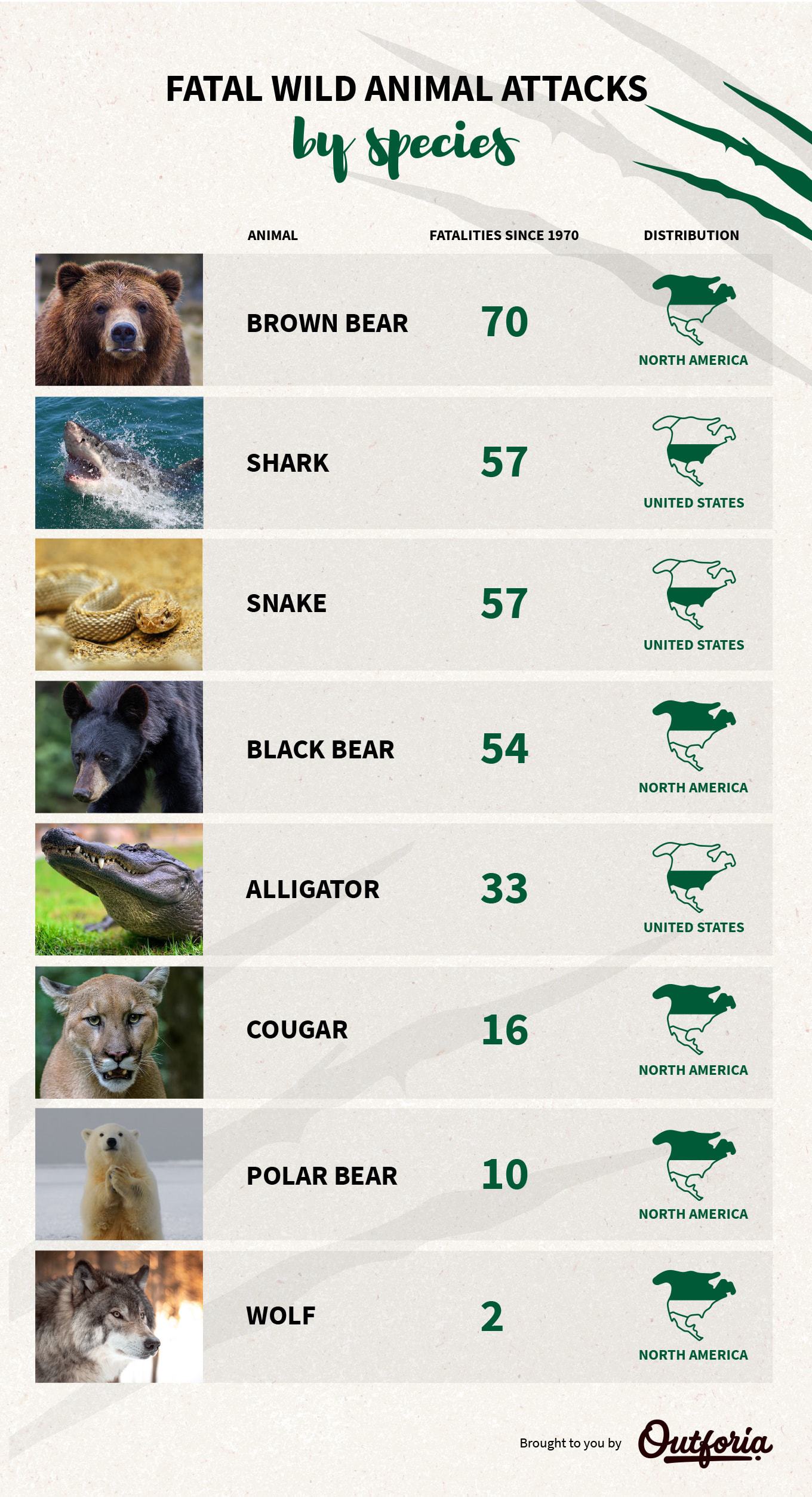
Share This Image On Your Site
<a href="https://outforia.com/animal-attacks/"><img style="width:100%;" src="https://outforia.com/wp-content/uploads/2021/08/Anima-attacks-fatal-wild-by-species-0821.jpg"></a><br> Fatal wild animal attacks Infographic by <a href="https://outforia.com">Outforia</a>1. Brown Bear
People Killed: 70
Brown bears are the most dangerous wild animal in North America, having killed at least 70 people in the last 50 years. These huge creatures are fiercely territorial and don’t take kindly to humans that get too close, and they have also been known to kill people for food. With immense power and weight behind their sharp claws, as well as a bite that will shatter your bones, these creatures are best avoided at all costs.
2. Shark
People Killed: 57
Sharks kill the second-highest number of people in North America each year, with 57 recorded human deaths as a result of shark attacks since 1970. Unlike many attacks from land-based animals, shark attacks often catch humans completely by surprise. As we are particularly vulnerable whilst in the water, attacks by different types of sharks are even more dangerous than you might expect from a creature with several sets of razor-sharp teeth, as escape is incredibly difficult and the risk of drowning is ever-present.
2. Snake
People Killed: 57
Snakes are tied with sharks for being the second most deadly animal in North America, having also killed 57 people since 1970. Deadly types of snakes like the rattlesnake, copperhead, and cottonmouth can all be encountered in the United States, though the vast majority of fatalities are attributed to rattlesnake bites. Snakes are the only animal on our list that kill their prey using venom, and they often hide in tall grass, undergrowth, or rocky pits, waiting for an unsuspecting victim to pass by.
There’s a lot of conflicting advice out there as to what you should do in the event of stumbling upon a dangerous wild animal. As every creature is different, with its own individual dangers and triggers, this advice needs to be tailored to the specific animal that you’re dealing with.
What To Do When Attacked By A
Dangerous Animal
Bears
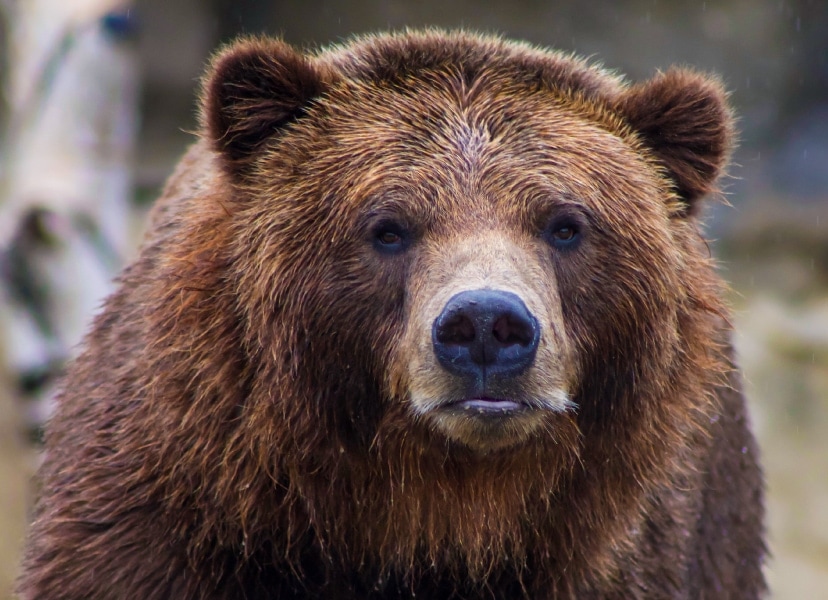
Bears are a common danger on many hiking trails in North America, and each species should be dealt with in a different way. Of the three bear species present in North America, you’ll likely only run into either a black bear or a brown bear, as polar bears are only really found north of the Arctic Circle.
If you encounter a black bear, then you have a slightly better chance of avoiding serious injury or death. Black bears are smaller than brown bears and, despite their name, come in a variety of colors. If you encounter one, you should make yourself as big as possible, raise your arms above your head and make a lot of noise. Your walking buddies should do the same thing while positioning themselves as close to you as possible. This will present an intimidating front to the bear and should hopefully cause it to leave you well alone. However, this is by no means a foolproof tactic, and you should always carry bear spray with you in an easy-to-reach place when entering bear country, and air horns can be particularly useful for scaring black bears away.
If you happen upon a brown bear, then you should behave very differently. You should very slowly and calmly reach for your bear spray while remaining as still as possible. Once you’ve got your deterrent ready to use, start moving away from the bear in a slow and controlled manner, making every effort not to startle the animal, while speaking in a quiet, calm, and reassuring voice. Should the brown bear start towards you, aim your bear spray just above the creature’s head and give it a prolonged dose of spray.
Sharks
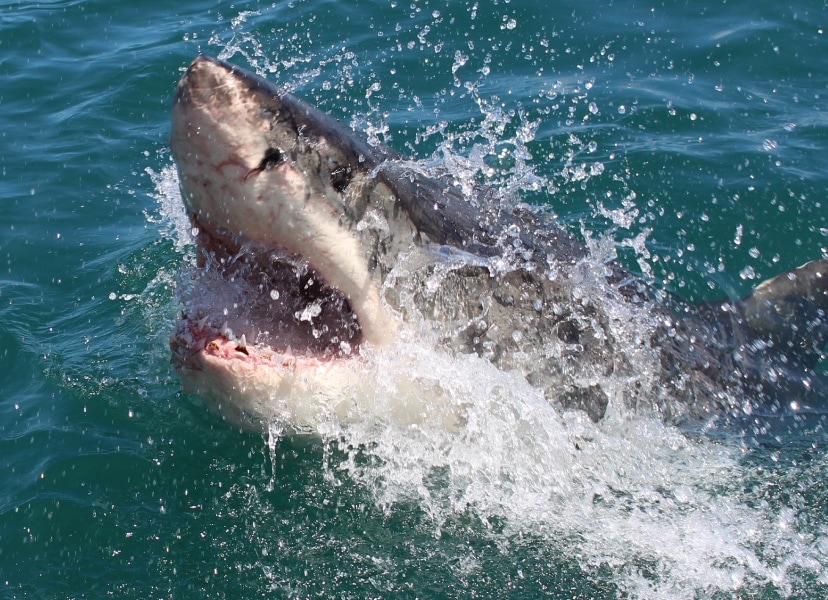
As with any animal attack, it’s always best to try and avoid an encounter with a shark if possible. This can be difficult as they’re hard to spot swimming beneath the water. However, if one is sighted, you should make your way as calmly as possible to the shore. Avoid erratic swimming and splashing, as this activity will draw the shark’s attention.
If you are attacked by a shark, it is recommended that you attack it as forcefully as you are able, using whatever you can use as a weapon, or using your fists and feet if needs be. You should target their eyes and gills, as both of these are sensitive areas for the shark. The shark’s nose has also been said to be a weak spot that can deter them from further attack.
If you are bitten, or just feel something swim against your leg, you should get out of the water as quickly and calmly as possible and apply pressure to any bleeding areas. You should then call emergency services and get yourself medical help as quickly as possible.
Snake bites
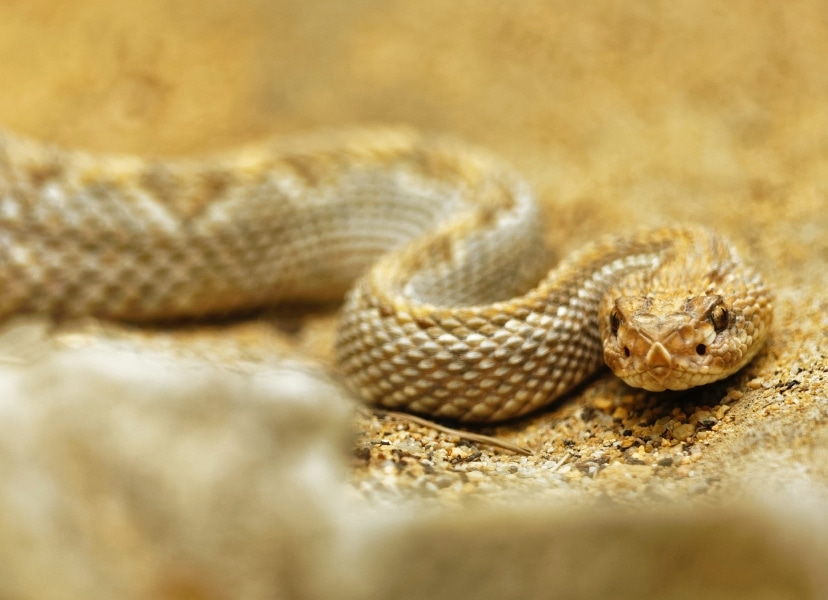
It can be difficult to spot snakes, as they tend to hide in tall grass, undergrowth, or in small crevices and covered areas. You can also encounter snakes while wading through water, which can mean you don’t realize that you’re bitten until it’s too late. In this instance, you should always check any scratches to make sure they aren’t really snake bites.
Snake bites are recognizable by a pair of puncture marks located at the wound. Other signs include redness and swelling around the punctures, severe pain, nausea and vomiting, disturbed vision, difficulty breathing, numbness or a tingling sensation in your limbs, and an increase in salivation and sweating.
If you have been bitten, try to keep calm and remember the color and shape of the snake if possible, as this will help to identify the species and appropriate treatment more quickly. Also, the calmer and more still the bite victim remains, the longer it will take for any venom to spread through the body. You should call emergency services as soon as possible, and have the bite victim sit or lie down while keeping the bite below heart level. The bite should be cleaned with warm soapy water as soon as possible and covered with a dry, clean dressing.
Do not attempt to suck out the venom. This can make matters worse and poison a second person. The wound should be left alone outside of the simple wash and dressing detailed above. You should also not consume any alcoholic or caffeinated beverages, and resist the urge to apply an ice pack to the wound.
Alligators
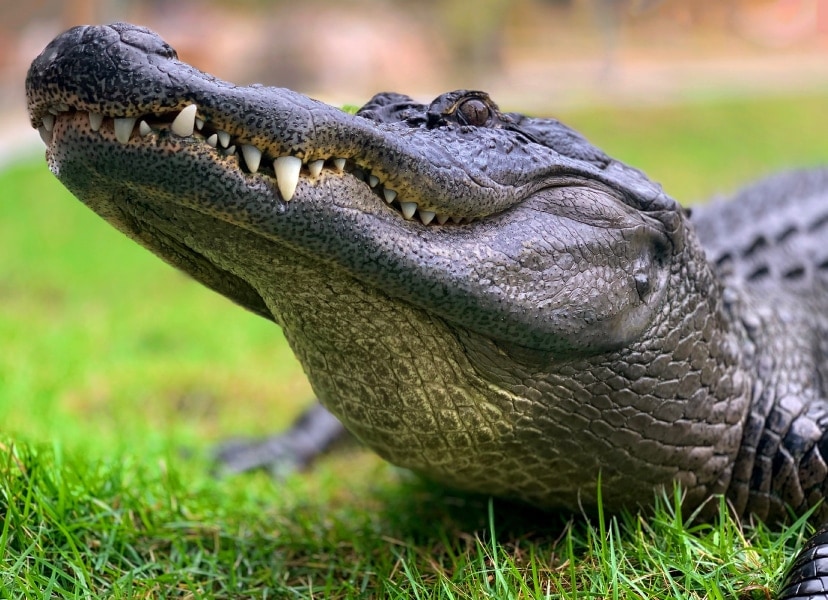
Alligator attacks on humans are relatively rare, you’ll be pleased to know. The best way of avoiding alligators is to stay away from the rivers and marshy habitats where they live. Should you be attacked in the water, the alligator will likely try to bite you and then roll in the water. You should not try to resist the rolling, as this could cause you to break a bone, or even your spine, leaving you at the mercy of the gator.
However, you should always put up as much of a fight as you can. As humans aren’t alligators’ natural prey, they will often release humans that make things too difficult for them. You should target their eyes and their snout if possible, but avoid trying to prize open their mouths as their bite strength is incredibly powerful and it would be a wasted effort. You should also never play dead, as they will not have a reason to let you go.
If you encounter an alligator on land, you should always try to run away if possible. While alligators can sprint quite quickly over short distances, they cannot keep up the pace. So, your best bet is to put as much distance between you and the gator as possible.
Cougars
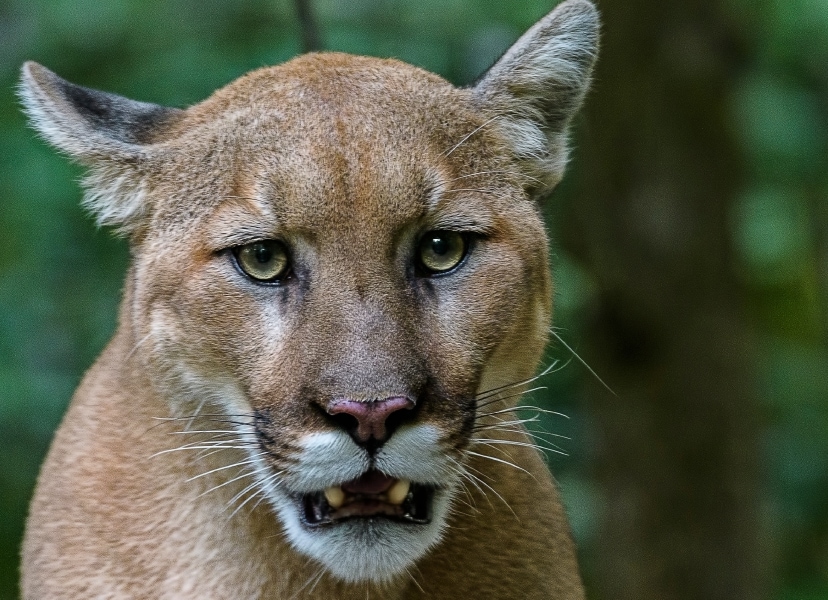
If you come across a cougar, then you should act in a similar way as if you encountered a black bear. Make yourself appear as large as possible and make loud noises by yelling or blowing whistles or an air horn. You should face the cougar, not turning your back on it, but avoid making direct eye contact as this can be interpreted as aggressive behavior and could provoke the cougar to attack.
You shouldn’t try to run from a cougar, as it will trigger the animal’s predatory instinct to chase prey. Cougars are also very fast creatures, so any attempt to outrun one will be futile. Instead, if the cougar does attempt to attack you, you should fight it off in whatever way possible. Hit the cougar with whatever implement you have to hand, or use your fists if you have to, as cougars have known to be deterred by aggression. You could also use pepper spray or bear spray to repel an aggressive cougar.
Wolves
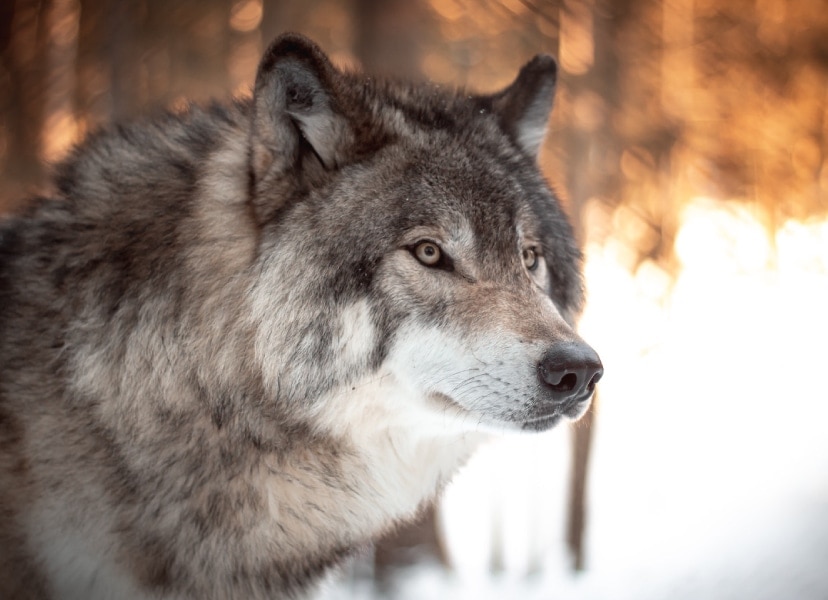
Wolf attacks on humans are a very rare occurrence, and usually, only happen when the wolf is rabid or if it has become habituated to humans. Otherwise, they usually occur when a wolf attacks a dog, which it perceives as a territorial threat, and the owner attempts to intervene.
If you do come across a wolf, you should make yourself appear tall and large, backing away slowly whilst maintaining eye contact. Do not turn your back on the wolf or run from it, as this will trigger the animal’s instinct to chase. If you have a dog with you when you encounter a wolf, bring your pet to heel and place yourself between the two animals. This should end the encounter.
If the wolf does not back down and displays signs of aggression, such as barking, howling, holding its tail high, or raising its hackles, you should make as much noise as possible and throw things at it. This should hopefully deter the wolf from coming too close. However, if it does attack you, you should fight back as aggressively as possible so that attacking you does not seem worth the effort.
A final thought…
However, it’s best to try and avoid this situation in the first place. Many animal attacks leave little room for survival other than hoping the animal becomes disinterested. If you’re out in the wilds, far from civilization or emergency services, there is very little that can be done if you are bitten, stung, or otherwise injured by an aggressive wild animal.
Therefore, it is incredibly important that you follow the advice of local wildlife experts or park authorities to make sure that you are protected against the region’s predators. General advice for the nature explorer is to travel in groups, so that you are not identified as an easy target, and to keep on the trail at all times. This is important not just for protecting your own life, but also for protecting the natural habitats by disturbing them as little as possible.
You should also be aware that taking children into areas that are known for having dangerous wild animals will put them at a high risk of being targeted due to their diminutive and less threatening appearance.
Methodology
- We wanted to find out which animals in North America are the most dangerous. To do this, we decided to judge them by the number of fatal attacks on humans over the last 50 years. We used data from Wikipedia that lists all fatal attacks from some of North America’s most dangerous predators. This allowed us to compare the animals and name the most dangerous predators in the region.
Next, we wanted to provide advice on what people should do if they encountered these animals themselves. To do this we used authoritative sources for each species, providing advice on what to do if attacked by bears, alligators, cougars, wolves, sharks, and snakes. This allowed us to create a useful guide for encounters with dangerous wild animals in North America.
Fair Use Statement
If you’re interested in covering this research, we encourage you to use any of the content included above. We just ask that you attribute Outforia fairly in your coverage and provide a link to our website so that your audience can learn more about our work.
You may also like…
As the world’s population continues to grow and human activity encroaches on wildlands, climate change threatens all that is wild. Between the loss of habitat, hunting and poaching, and the degradation of the climate, wildlife populations are under siege.
We are passionate about nature and wildlife and want to inspire everyone to look after its incredible beauty and diversity by exploring the outdoors. Learn more about wildlife species on the links below.
Types of Butterflies | Types of Crabs | Types of Horses | Types of Penguins | Types of Elephants | Types of Sea Turtles | Types of Big Cats | Types of Salamanders | Types of Sharks | Types of Seals | Types of Otters | Types of Bees | Types of Ducks | Types of Falcons | Types of Eels | Types of Salamanders | Types of Whales | Types of Owls |
There’s nothing quite like being in the wild, in the great outdoors. It’s a magical feeling, looking up at the stars, taking in the scent of nature, and feeling the wind and smells of the wild on your face. There’s a sense of freedom and peace that can be matched by little else.







